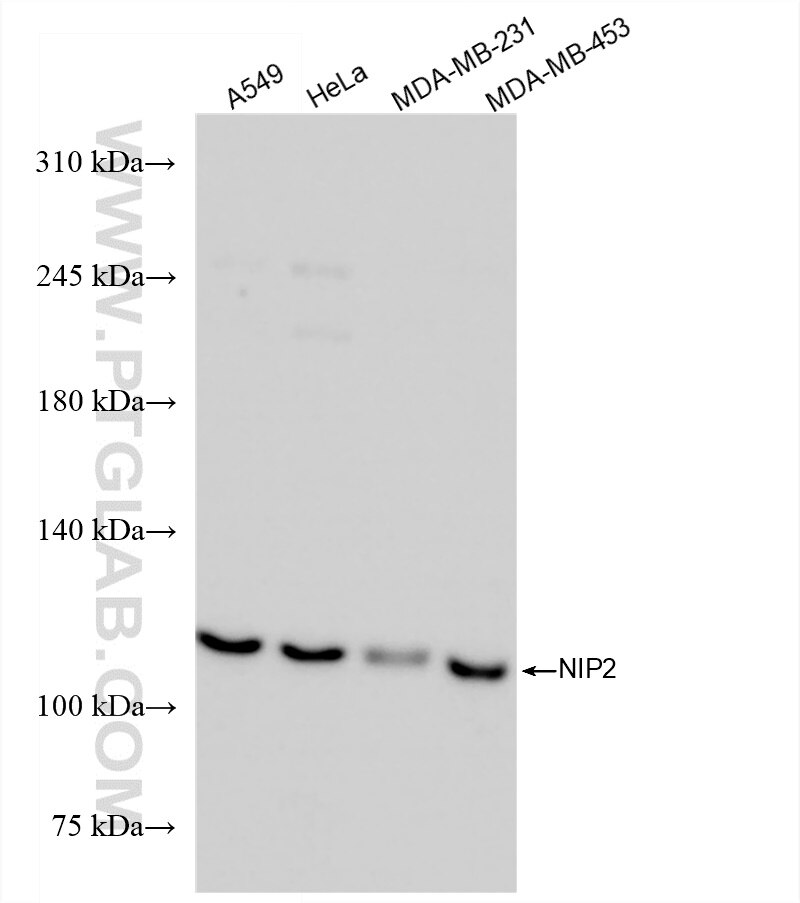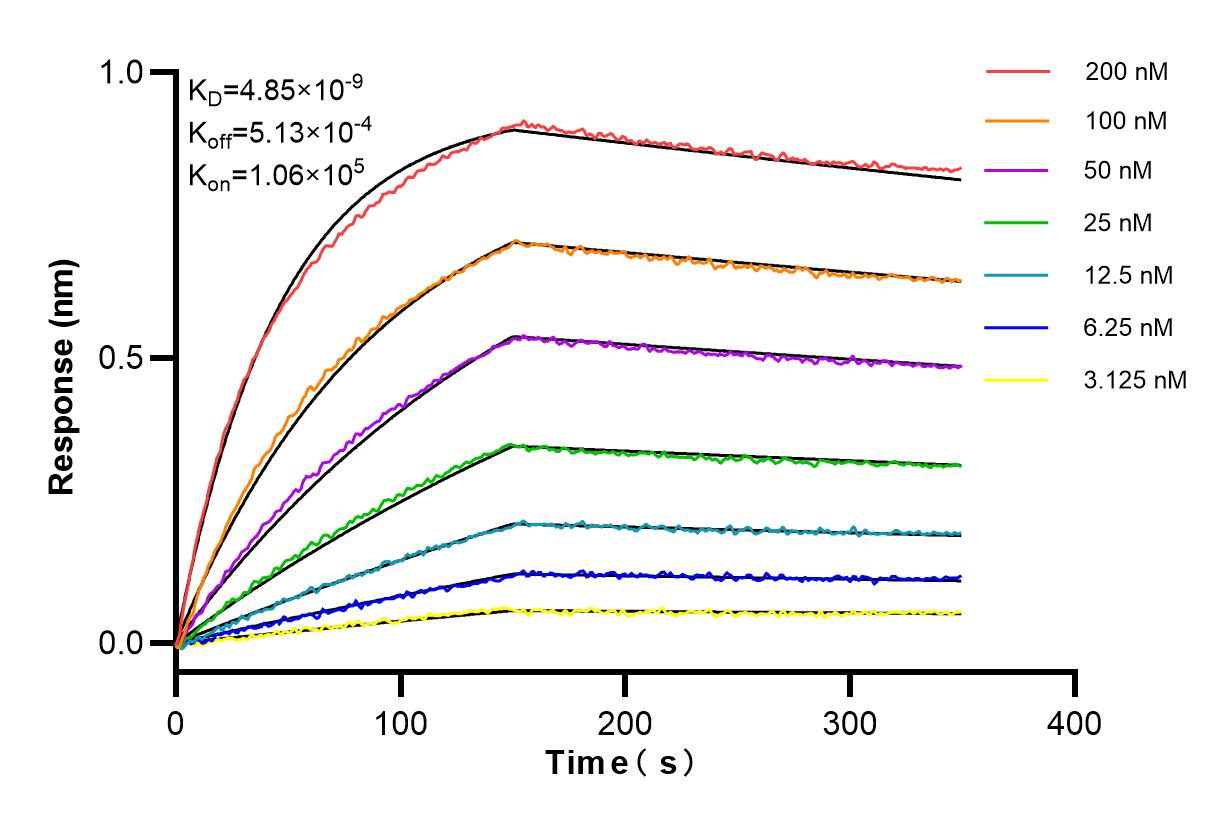Tested Applications
| Positive WB detected in | A549 cells, HeLa cells, MDA-MB-231 cells, MDA-MB-453 cells |
Recommended dilution
| Application | Dilution |
|---|---|
| Western Blot (WB) | WB : 1:2000-1:10000 |
| It is recommended that this reagent should be titrated in each testing system to obtain optimal results. | |
| Sample-dependent, Check data in validation data gallery. | |
Product Information
84371-2-RR targets FNIP2 in WB, ELISA applications and shows reactivity with human samples.
| Tested Reactivity | human |
| Host / Isotype | Rabbit / IgG |
| Class | Recombinant |
| Type | Antibody |
| Immunogen | FNIP2 fusion protein Ag35014 Predict reactive species |
| Full Name | folliculin interacting protein 2 |
| Observed Molecular Weight | 125 kda |
| GenBank Accession Number | BC166693 |
| Gene Symbol | FNIP2 |
| Gene ID (NCBI) | 57600 |
| RRID | AB_3671906 |
| Conjugate | Unconjugated |
| Form | Liquid |
| Purification Method | Protein A purification |
| UNIPROT ID | Q9P278 |
| Storage Buffer | PBS with 0.02% sodium azide and 50% glycerol , pH 7.3 |
| Storage Conditions | Store at -20°C. Stable for one year after shipment. Aliquoting is unnecessary for -20oC storage. 20ul sizes contain 0.1% BSA. |
Background Information
Folliculin (FLCN)-interacting proteins 1 and 2 (FNIP1, FNIP2) are homologous binding partners of FLCN, a tumor suppressor for kidney cancer. FNIP2 was found to bind to the C terminus of FLCN and to AMPK, like FNIP1. FNIP2 competes with the activating co-chaperone AHSA1 for binding to HSP90AA1, thereby providing a reciprocal regulatory mechanism for chaperoning of client proteins (PMID: 18403135).
Protocols
| Product Specific Protocols | |
|---|---|
| WB protocol for FNIP2 antibody 84371-2-RR | Download protocol |
| Standard Protocols | |
|---|---|
| Click here to view our Standard Protocols |





